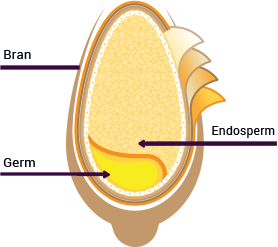Tips for Parents

Be a Role Model for Your Child
Children are influenced more by their parents' actions than by their advice.


How?
- Be active and move more with your child!
- Follow healthy eating habits.
- Invite your child to help you prepare food, such as fruit salads, vegetable salads, or cake, to encourage them to eat what they have prepared.


How important are fruits and vegetables in our children’s diet?
- They are rich in essential nutrients, including folic acid, magnesium, potassium, dietary fiber, and vitamins A,B, C, and E.
- They help lower the risk of chronic diseases such as heart diseases and cancer.



Easy ways to add fruits and vegetables
- Keep a variety of fruits and vegetables in your house.
- Choose colorful fruits and vegetables to enhance the appearance of meals.
- Add fruits to breakfast cereals or salads.
- Include at least one type of fruit or vegetable with each main meal.
- Enjoy raw, cooked, and frozen fruits and vegetables in all their colors.
- Consume plenty of soups and stews that include a variety of vegetables.



Fun ideas to encourage fruits and vegetables consumption
- Cut fruits and vegetables into funny shapes or faces to make the plate more appealing.
- Serve fruits and vegetables with main meals and as snacks.

Adding vegetables to your school snack
- Cherry tomatoes

- Chopped carrots

- Sliced cucumbers

- Green beans




The benefits of whole grains and their importance in our children’s diet
Whole grains consist of three parts:
1- Bran
Rich in fiber, B vitamins, and trace minerals.
2- Endosperm
Contains carbohydrates and proteins.
3- Germ
Helps reduce the risk of heart disease, maintains digestive health, and increases the feeling of fullness.


Easy ways to add whole grains to your meals
- Use whole wheat bread.
- Choose whole wheat or oatmeal breakfast cereals.
- Prepare popcorn as a snack after a long school day.
- Choose whole wheat rice and pasta or bulgur instead of white rice and pasta.




Examples of healthy snacks










Choosing healthy food options when eating out
When reading the menu:
Instead of these terms:
- Crispy
- Fried
- Breaded
Look for these terms:
- Grilled
- Boiled
- Steamed


Look for these foods:
- Whole wheat bread
- Natural or sparkling water
- Fresh juice
- Lemon and olive oil dressing
Instead of these foods:
- White bread
- Soft drinks
- Sweetened drinks
- Mayonnaise



General Tips
Children may not accept new foods easily, especially certain fruits and vegetables.
Offer a variety of fruits and vegetables, particularly during the early years, as changing eating habits becomes more challenging as they grow older.

- Avoid pressuring your child. Remember how you felt when you were forced to eat something you didn’t like
- Instead, invite your child to participate in preparing the food to encourage them to try it
- It is recommended to reduce the intake of foods high in salt, fats, and sugar.
- Be mindful of your child’s signal of being full.
- Offer small portions of food and give your child the opportunity to ask for more.
- Don’t stress about finishing everything on the plate.
To minimize the temptation of purchasing unhealthy snacks like chips, chocolate, and biscuits, it is better to avoid sending money with your child to school on daily basis. If these foods are not available at school, your child may still have the option to purchase them from external sources outside of the school. Therefore, it’s better to provide money to the school occasionally rather than daily.


What Is the importance of exercising?


- Increases the ability to focus and concentrate
- Strengthens muscles and bones
- Maintains a healthy body and weight
- Stimulates blood circulation
- Supports lung health
Easy ways to encourage exercise
Children need at least an hour of exercising every day, which can be achieved through enjoyable activities such as:
- Playing outside
- Walking with family or friends
- Playing (hide and seek, running, etc.)...)
- Jumping rope, playing football or basketball
- Cycling or swimming
Don’t forget to encourage your child to drink water!









Unleash the child within you.